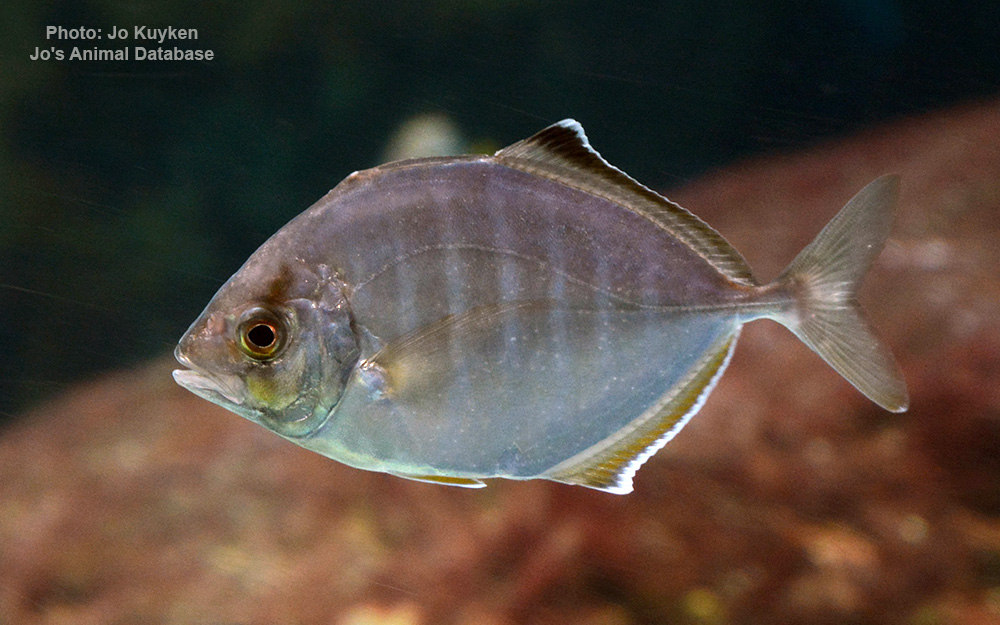Whitefin trevally
(Carangoides equula)

Image source: Jo's Animal Database
Classification
General data
The whitefin trevally (Carangoides equula), also known as the horse trevally, is a species of deep water offshore fish in the jack family Carangidae. The species inhabits the tropical to temperate waters of the Indo-Pacific and central Pacific, ranging from South Africa in the west to Hawaii in the east.
The whitefin trevally is a moderate-sized fish, growing to 37 cm, and is distinguished by a number of morphological traits, including fin size, gill raker count, and colour.
It inhabits the continental shelf and slope at depths to 200 m over sand and mud substrates, where it preys on fish, crustaceans, and cephalopods. Studies in Japan indicate a length at sexual maturity of 17.4 cm on average, with spawning occurring between May and October, with each individual spawning multiple times. Whitefin trevallies are of high importance to fisheries in Japan, where they are taken by trawlers, although the catch numbers have halved since the 1980s. It is of minor importance elsewhere throughout its range, but is considered a good table fish.
The species has a body shape similar to a number of other jacks, having a compressed, almost rhomboidal body, with the dorsal and ventral profiles approximately equally convex. The dorsal profiles of the snout and nape in the species are almost straight. Two separate dorsal fins are seen, with the first having seven spines, while the second consists of one spine and 23 to 25 soft rays. The first dorsal fin is moderately high, with the longest spine about as high as the soft dorsal-fin lobe is long, and is quite distinctive of the species. The anal fin consists of two anteriorly detached spines followed by one spine and 21 to 24 soft rays, with the pelvic fin having one spine and 18 or 19 soft rays.
The lateral line has a moderately strong anterior arch with the junction of the curved and straight sections occurring vertically below the twelfth to fifteenth soft rays of the second dorsal fin. The curved segment of the lateral line is longer than the straight section, which contains no to six scales followed by 22 to 32 scutes.
The breast is entirely scaled, or has a very small naked area anteroventrally. Both jaws contain narrow bands of small teeth, with the outer teeth slightly larger. It has 27 to 32 gill rakers in total and 24 vertebrae.
The whitefin trevally is silver, with a blue to green dorsal surface, becoming silvery white below. The soft dorsal and anal fins are dusky yellow basally, with the anterior rays of both having dark grey-brown median and white distal bands. The caudal fin is dusky yellow, while the pectoral and pelvic fins are white. Juveniles have between 5 and 7 dark bands vertically on their sides.











